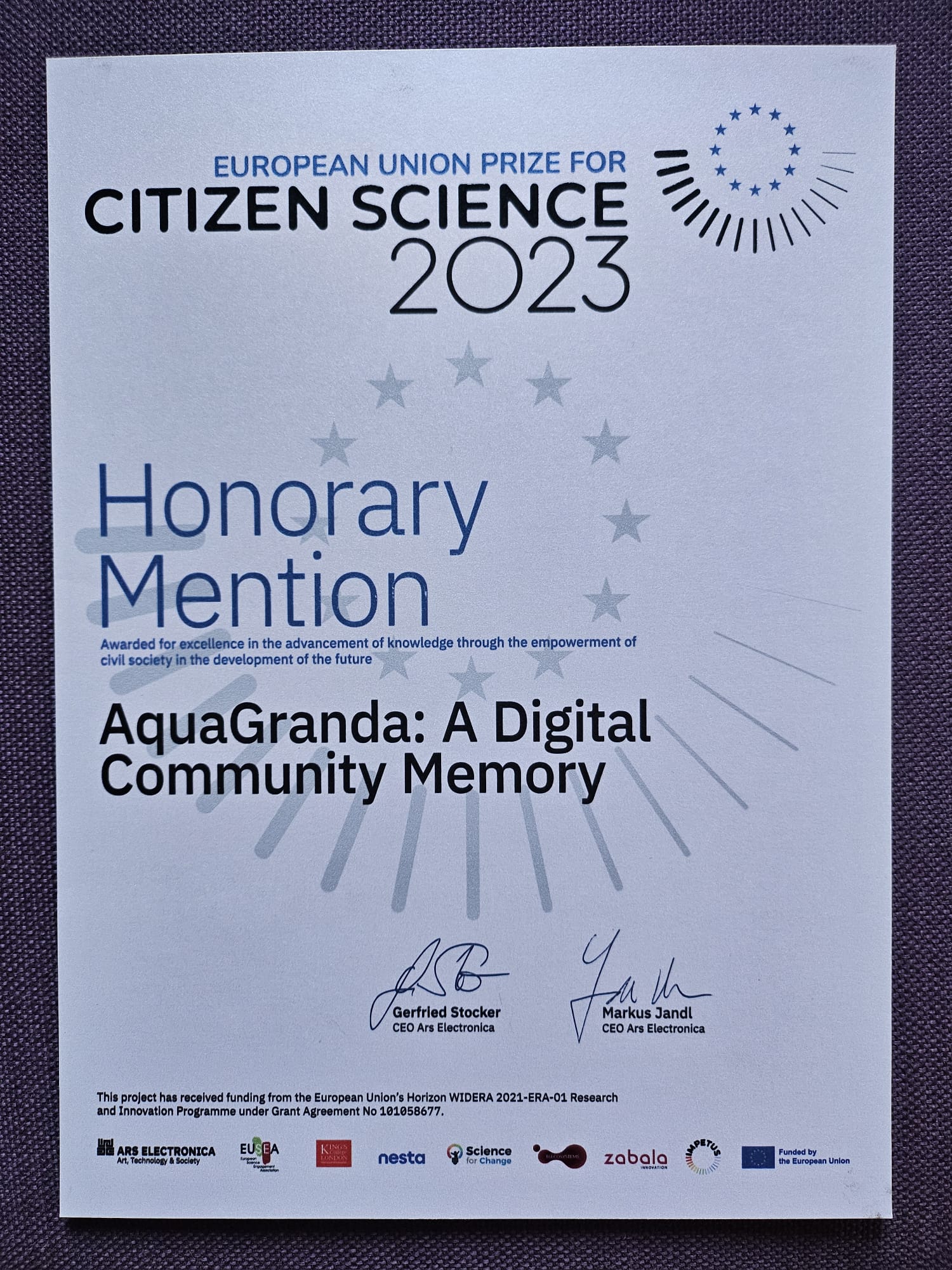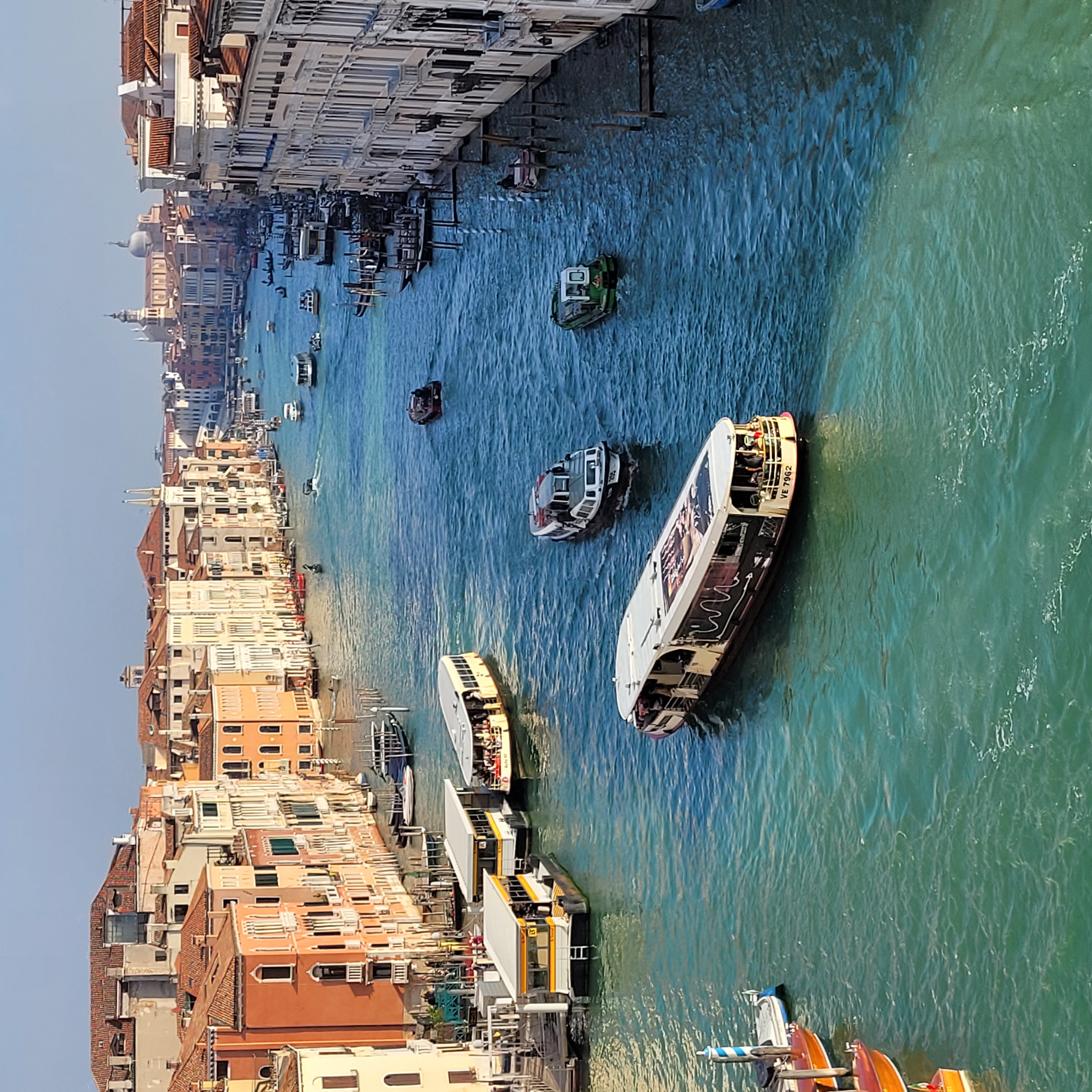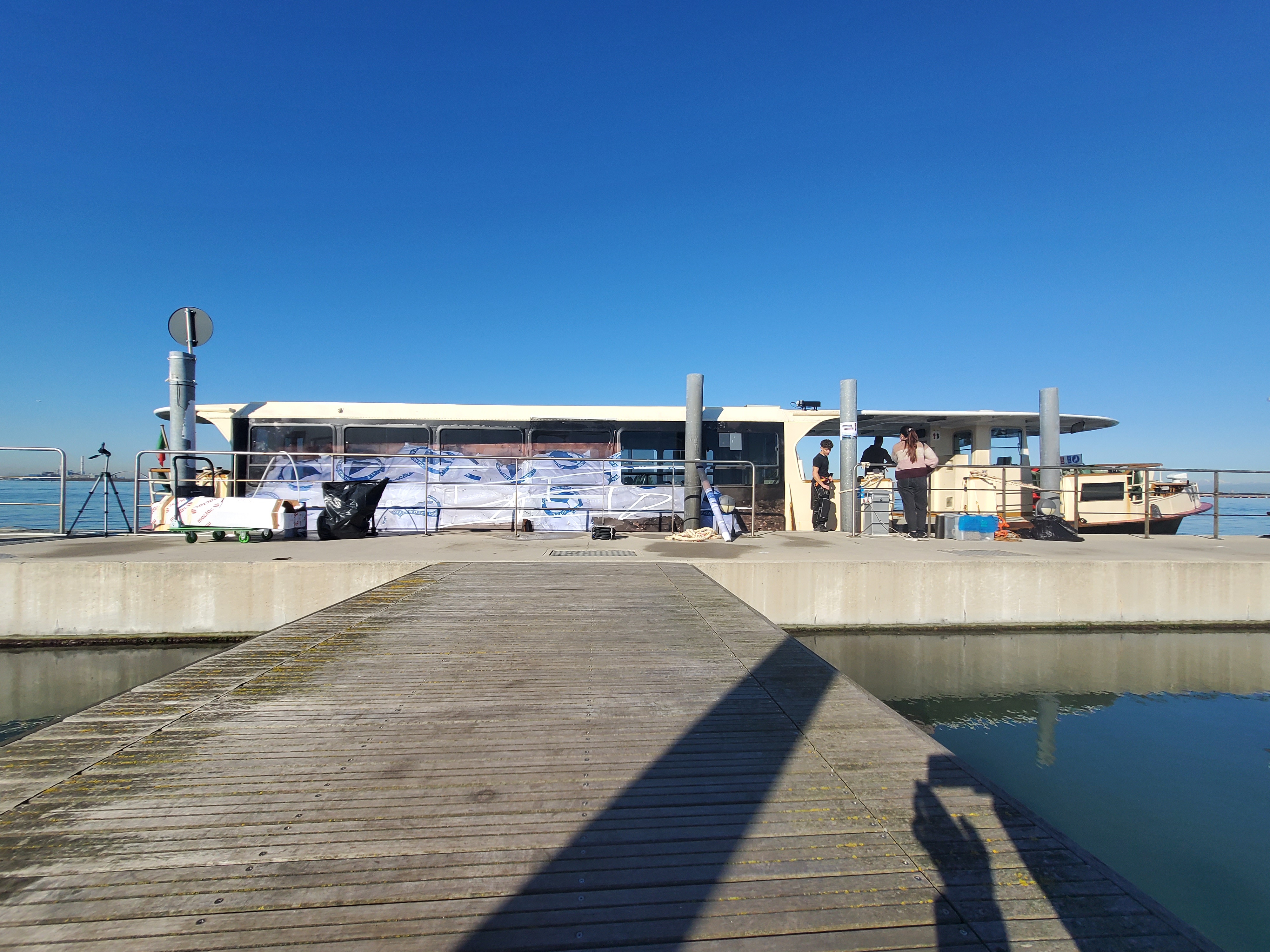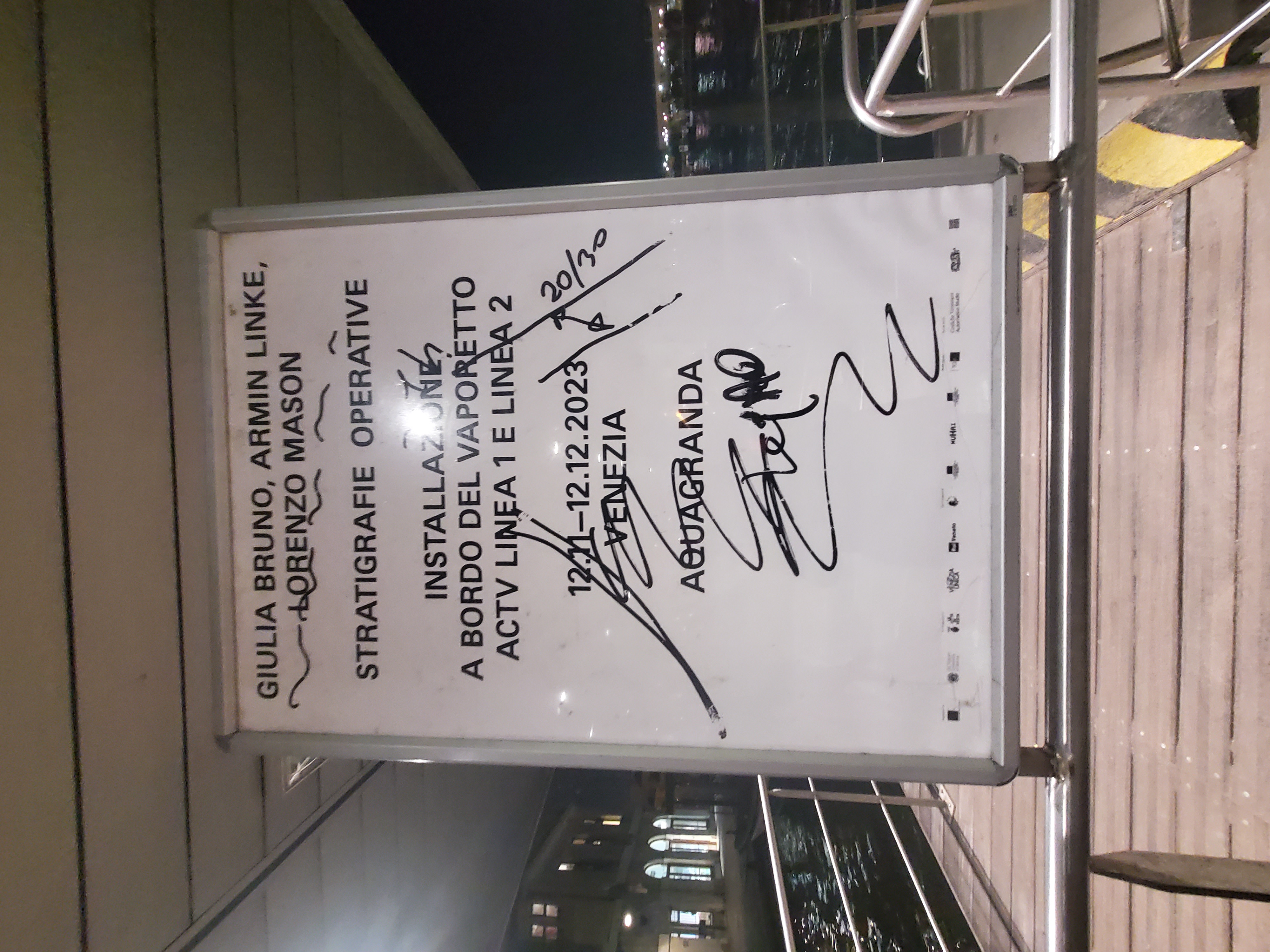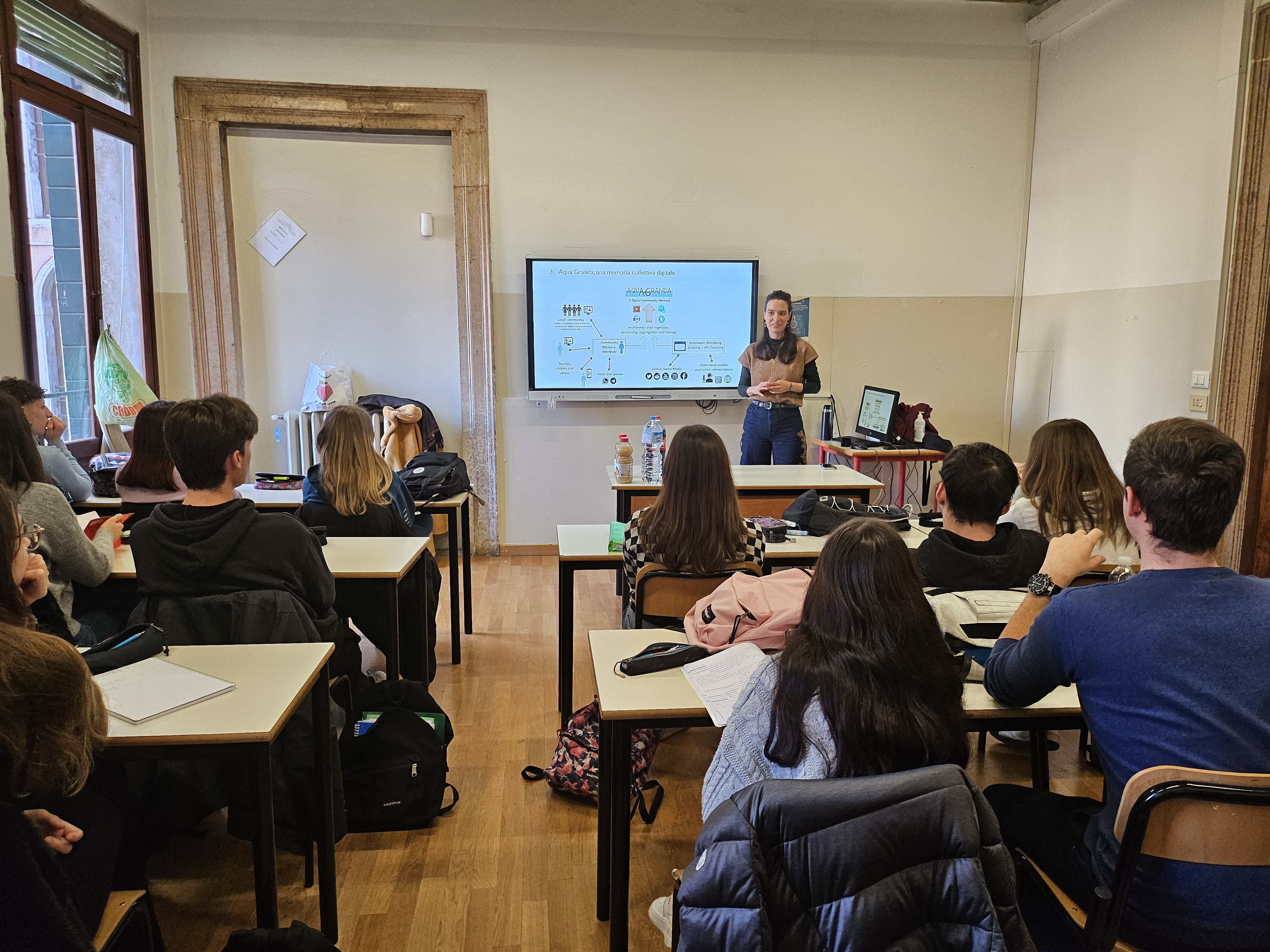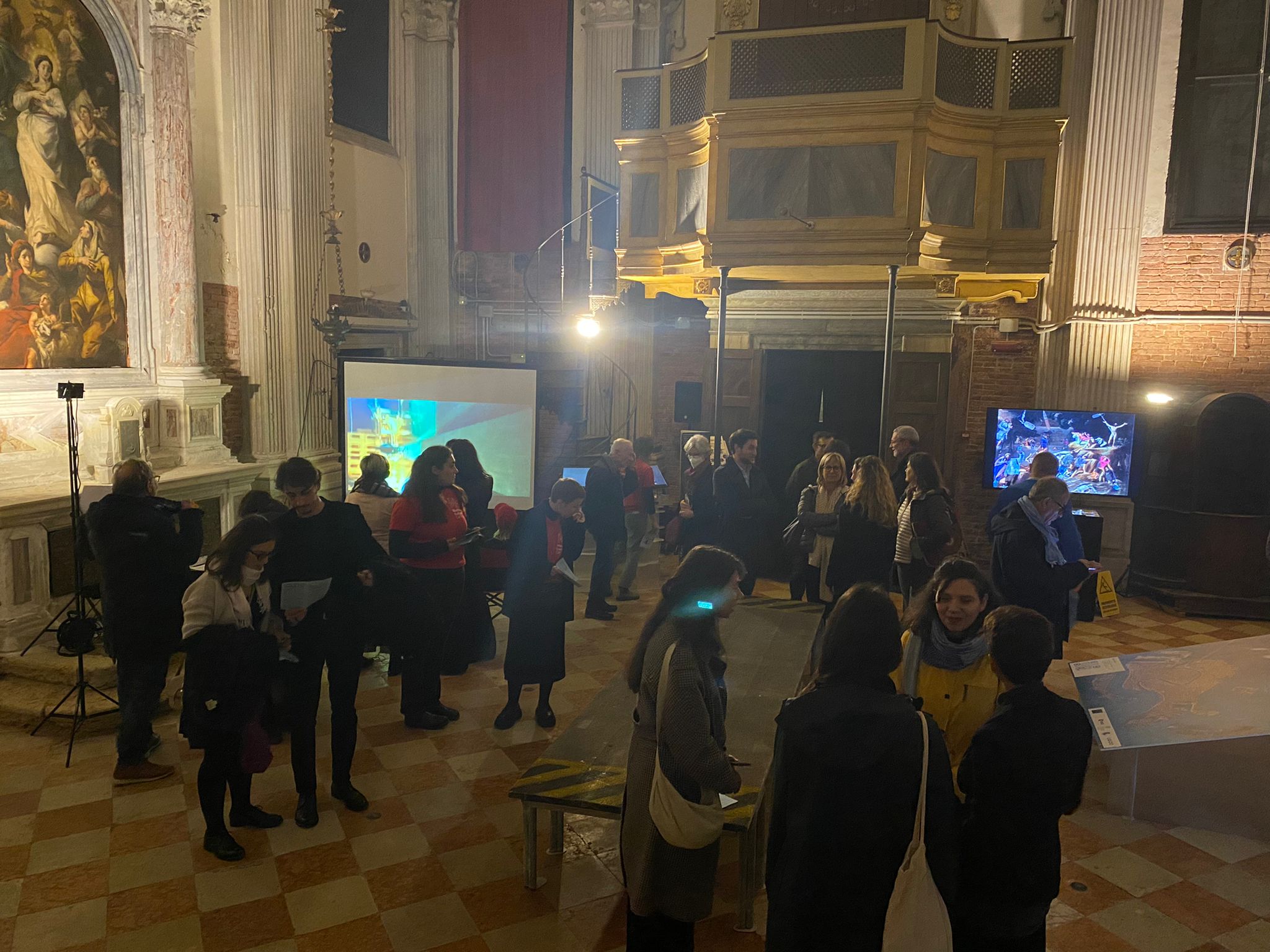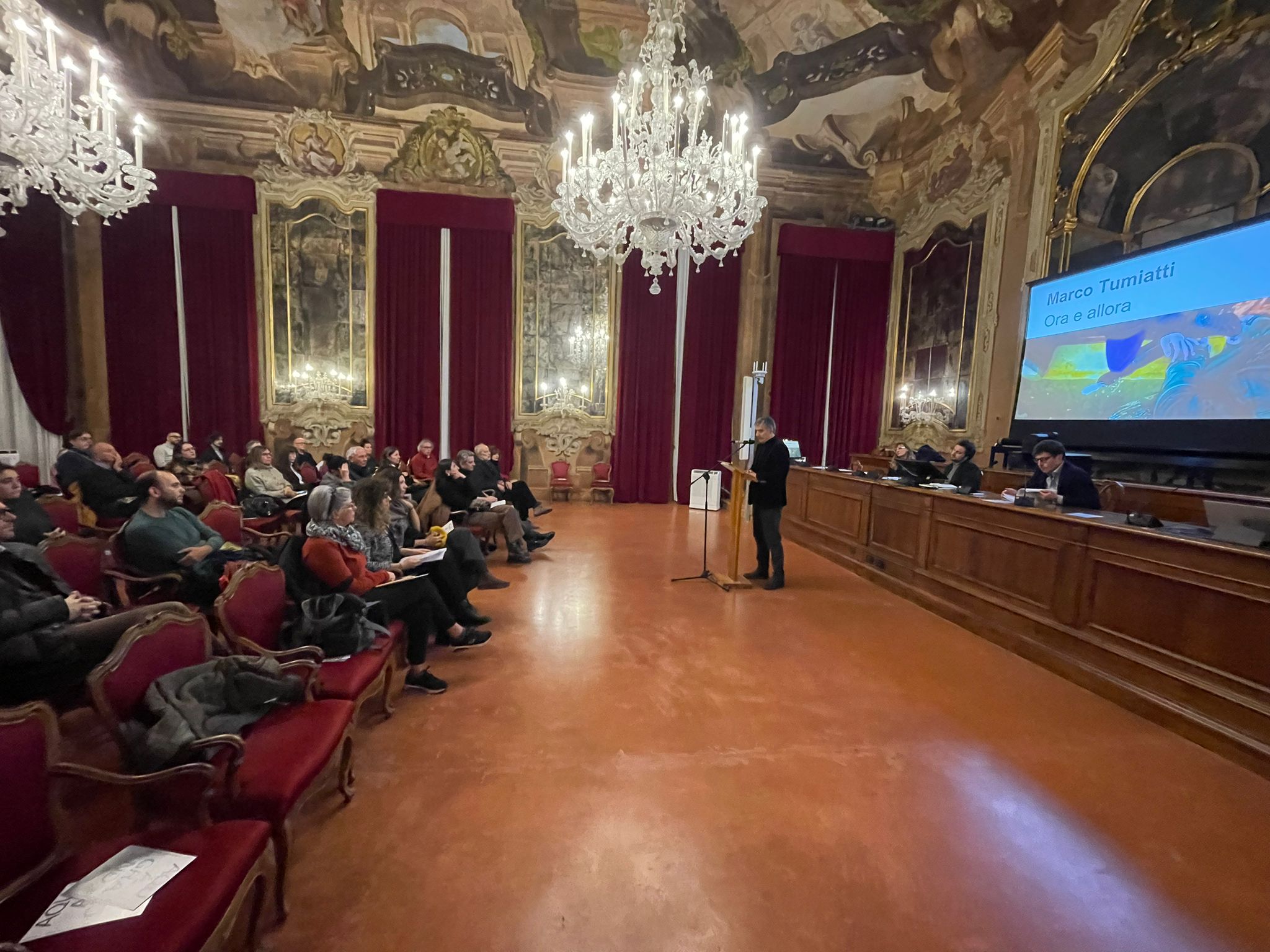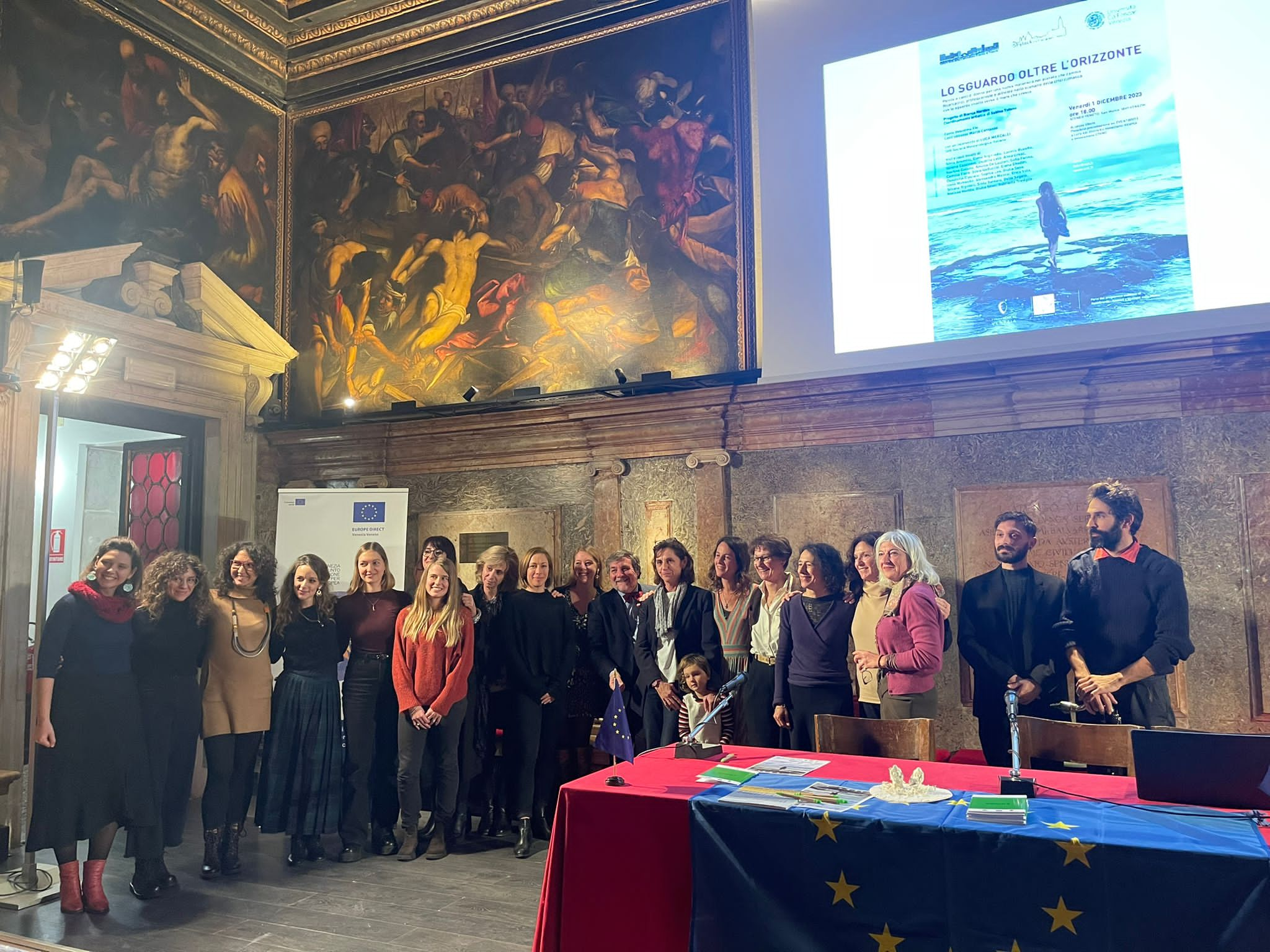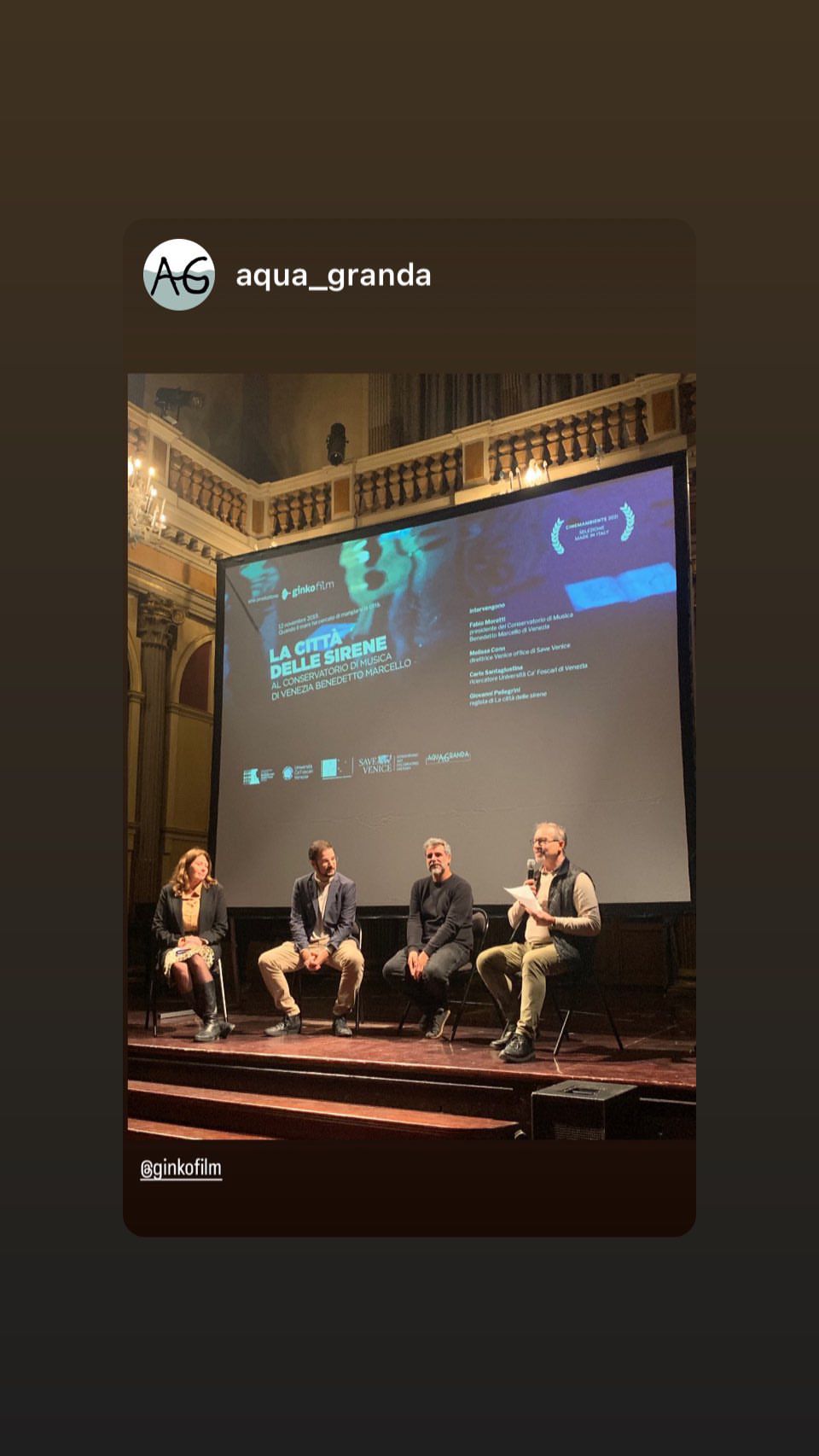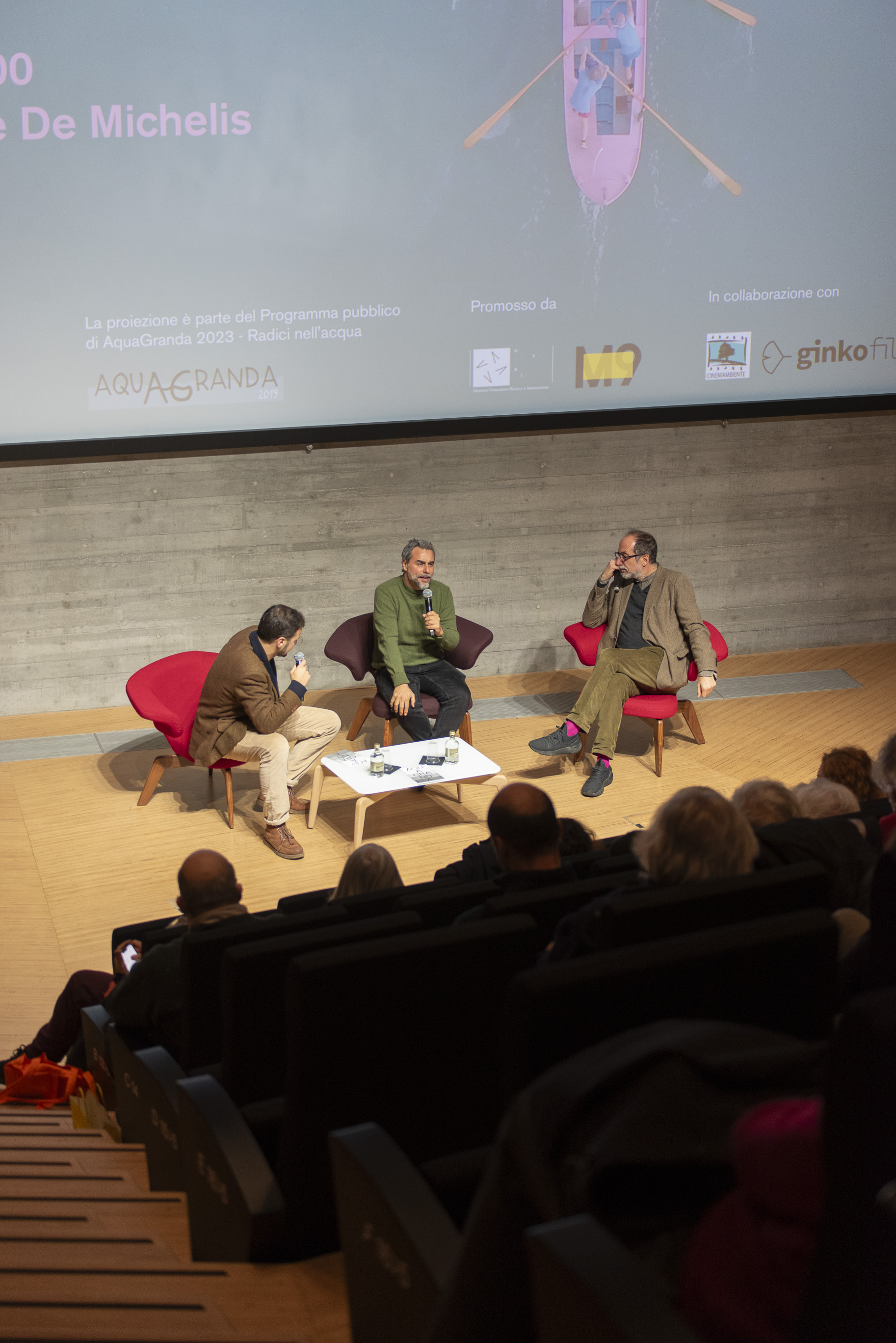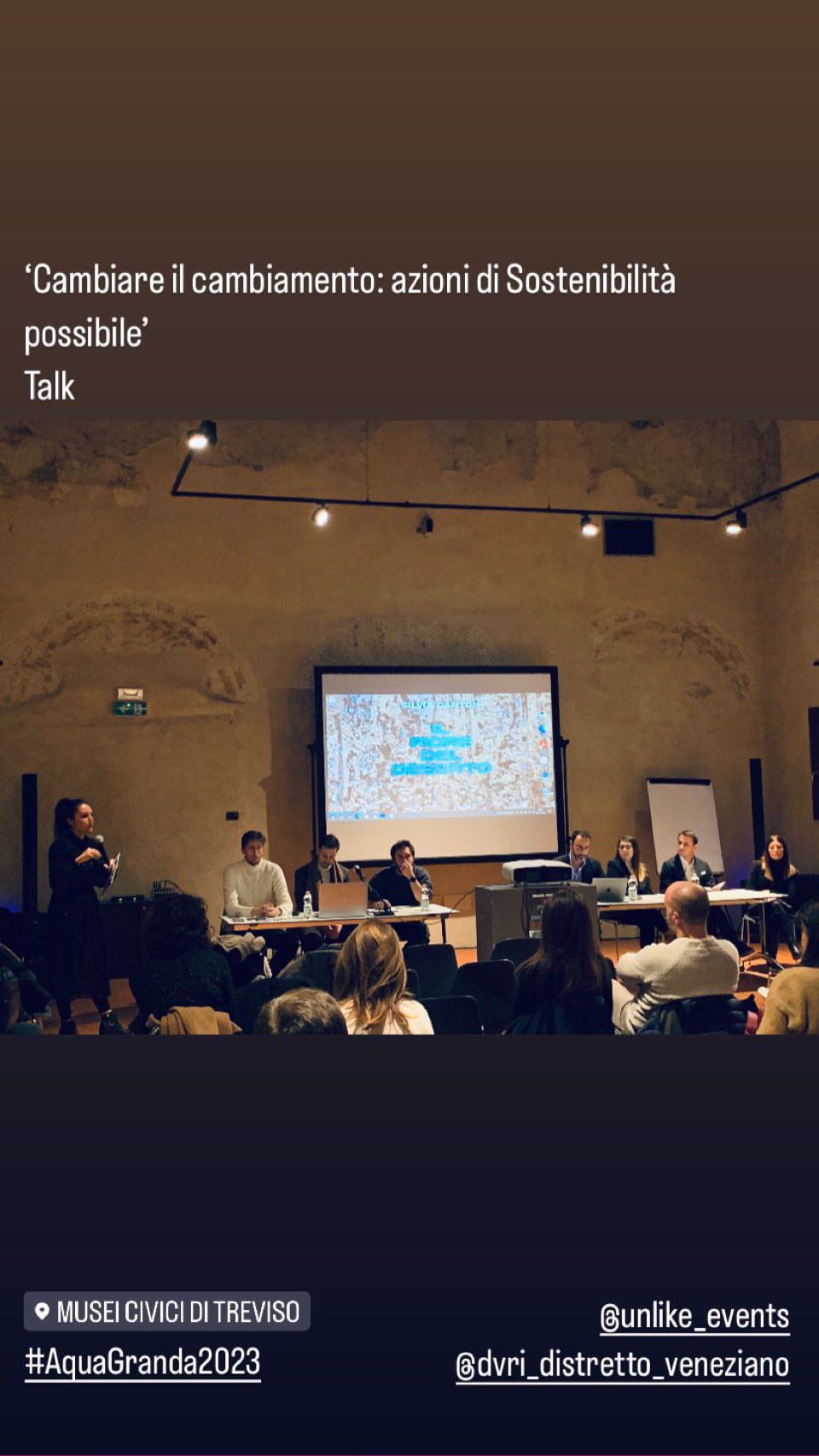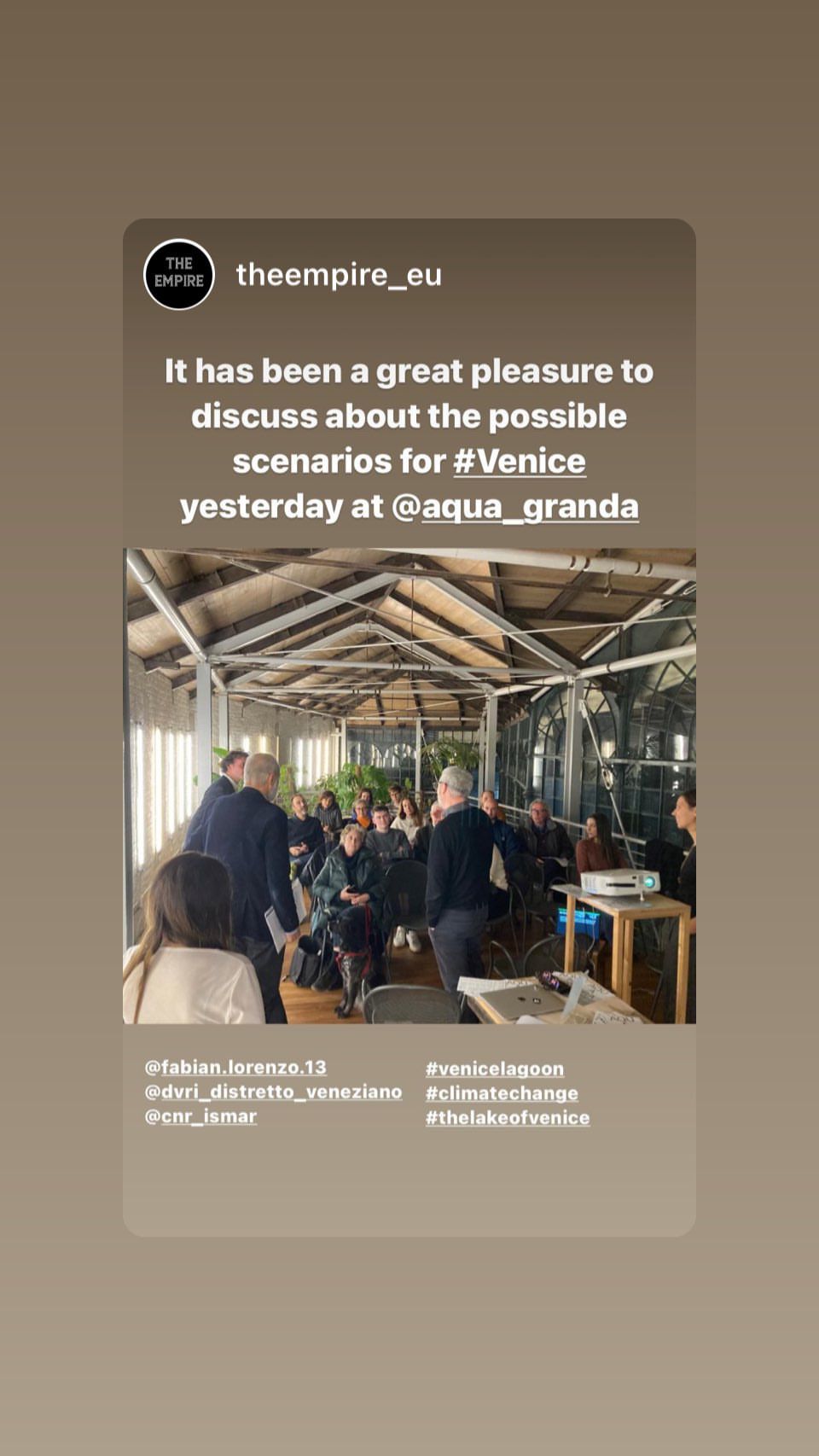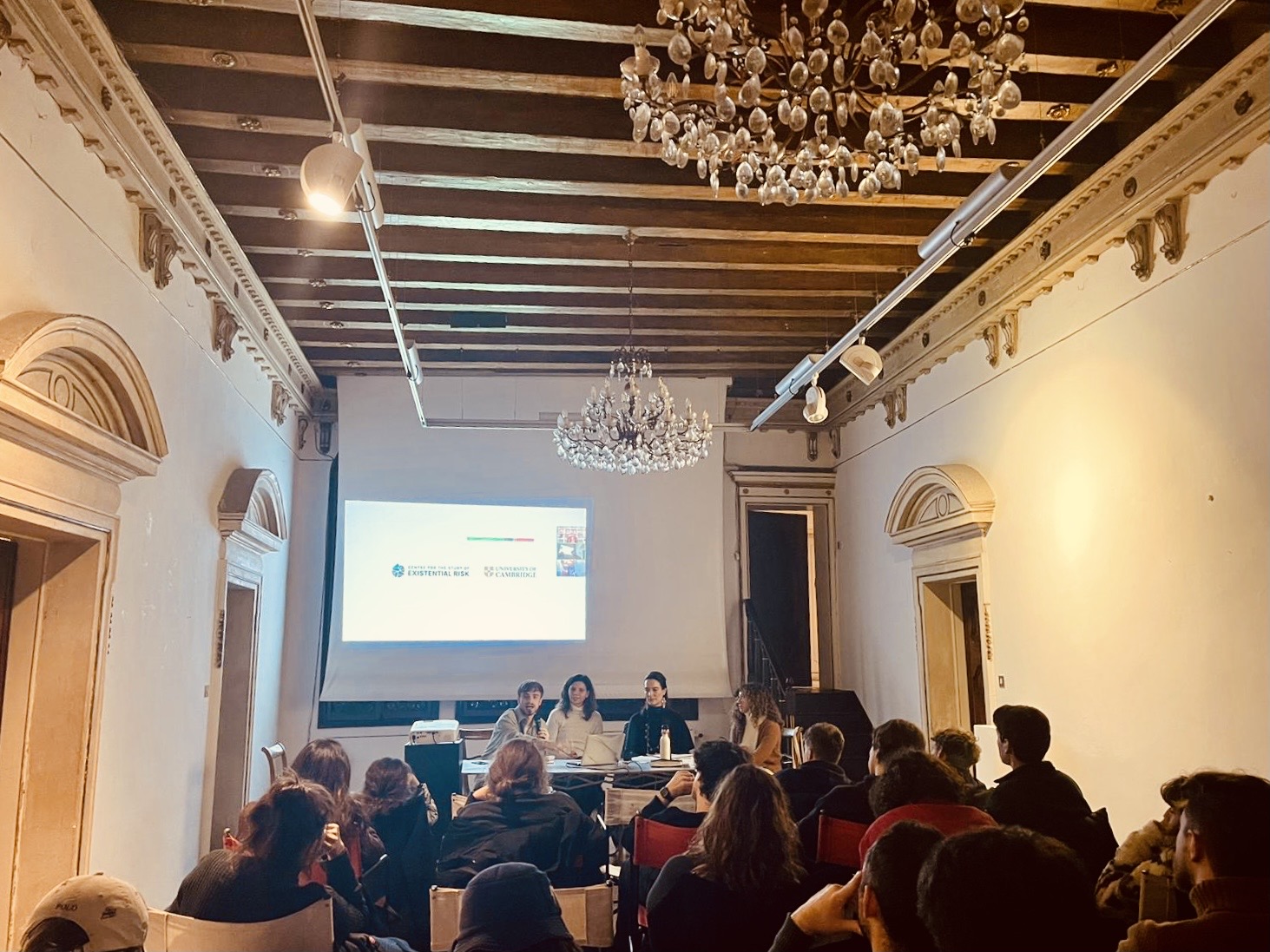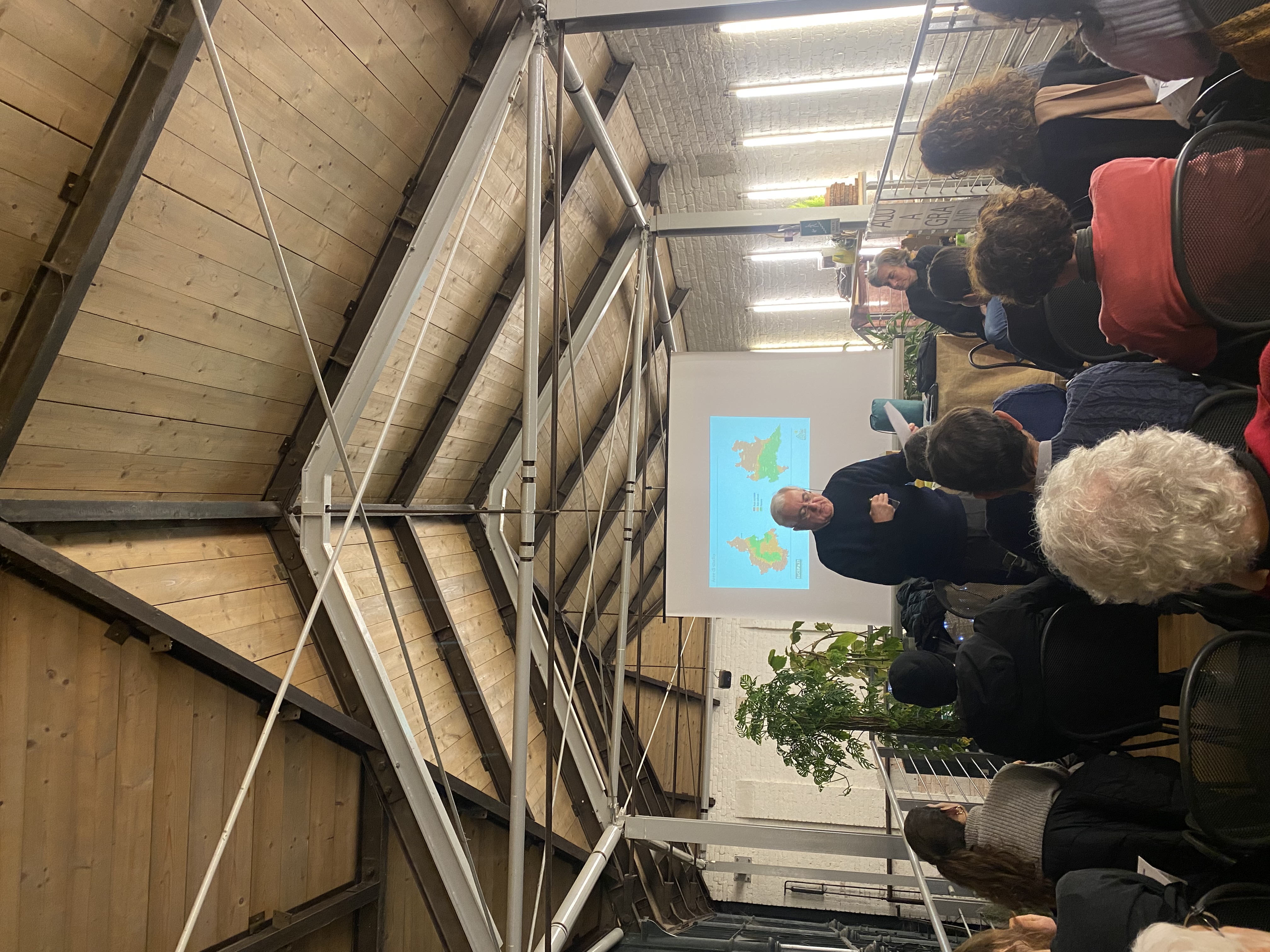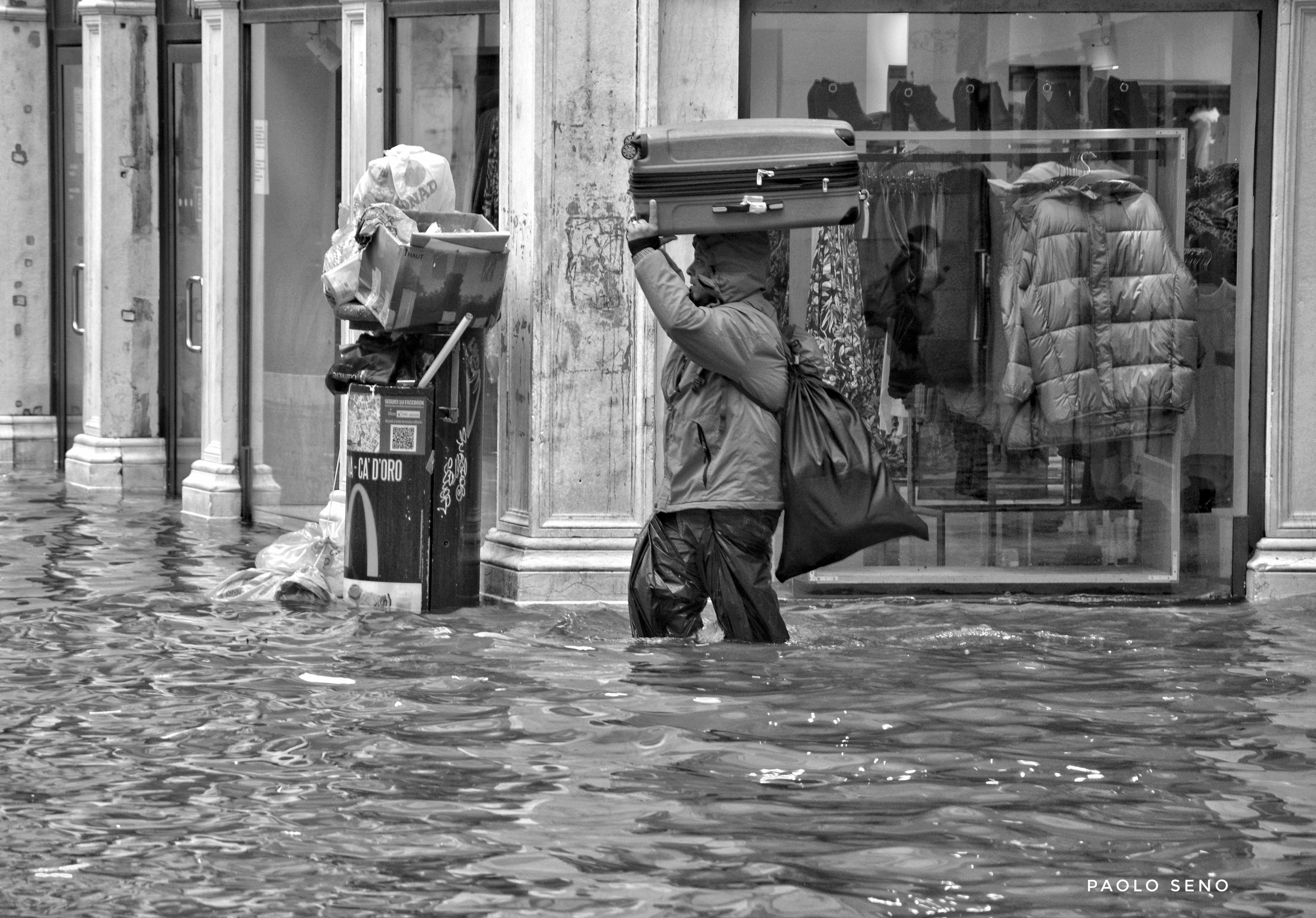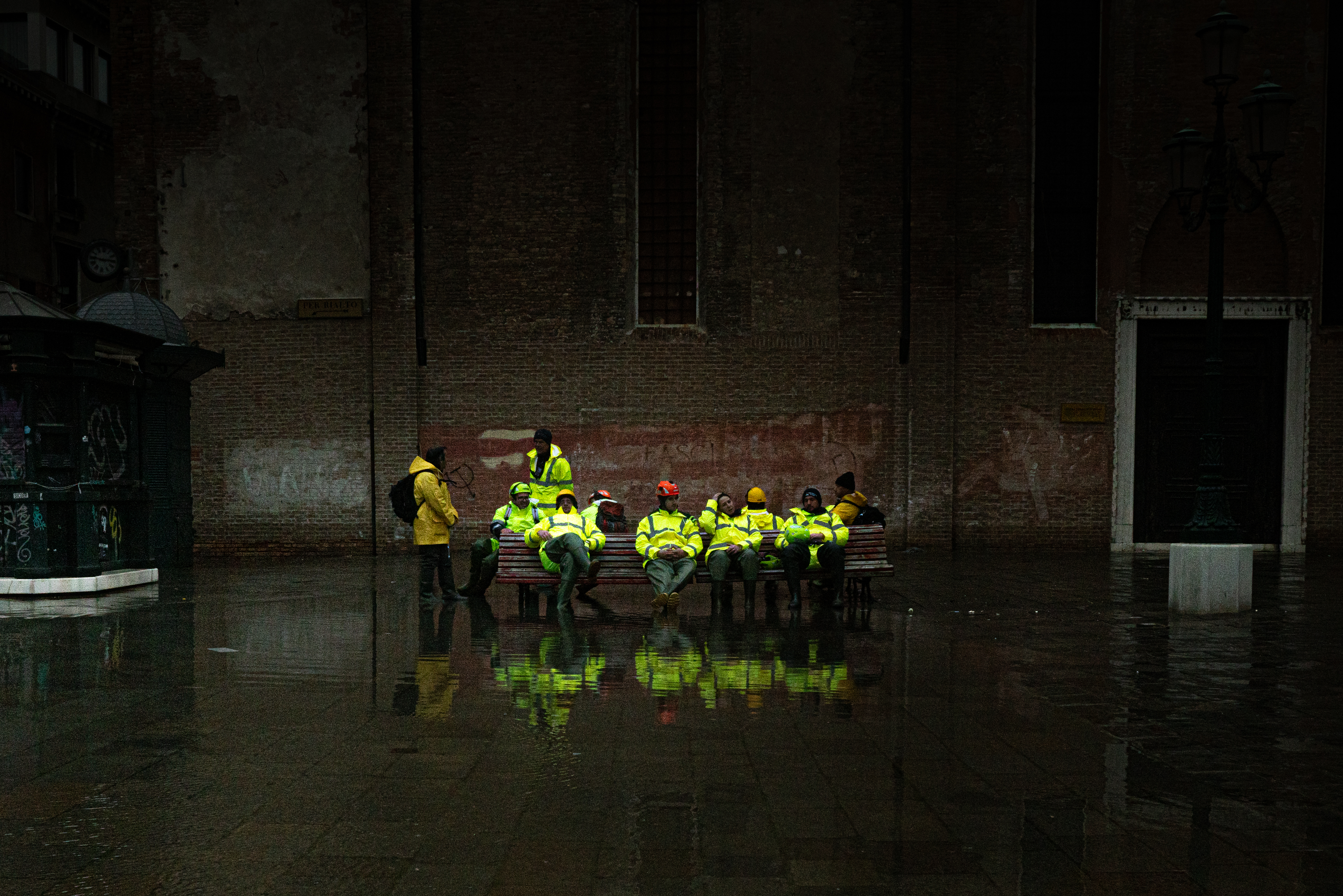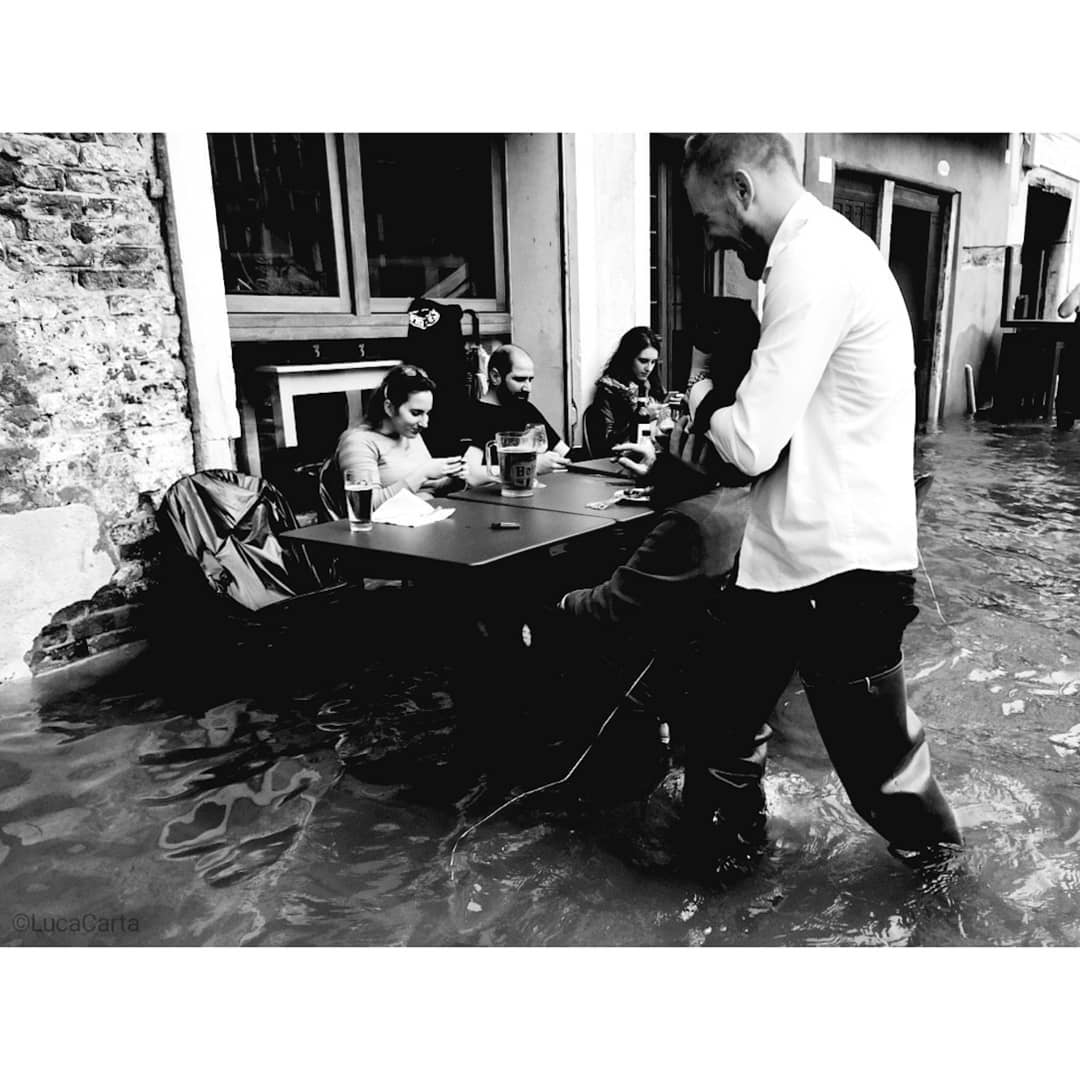Reconnecting with nature
AquaGranda, a digital community memory
AquaGranda, a digital community memory - Encounters and dialogues on tides
“AquaGranda, a Digital Community Memory” transforms the individual memories of Venice’s catastrophic floods into an opportunity to collectively rethink the city’s relationship with water, climate, and nature in the past, present, and future. Moving beyond a human-centered perspective, it recognizes the deep interconnection between the city and its fragile, fluid, and ever-changing natural environment, questioning its survival in the long run through citizen science art interventions.
Italy
Local
Venice, Italy
Mainly urban
It refers to other types of transformations (soft investment)
Yes
2024-11-12
Yes
Horizon2020 / Horizon Europe
No
No
As a representative of an organisation, in partnership with other organisations
“AquaGranda, a Digital Community Memory” is a project that transforms the collective memories of Venice’s catastrophic floods into an opportunity to rethink the city’s relationship with water, climate, and nature. In November 2019, Venice was subjected to ‘aqua granda’ (big water), where over 90% of the city and its nearby islands were completely inundated. It was a truly catastrophic event. AquaGranda reflects on the impacts of exceptional tides and waters to shift their perception from a mere urban infrastructure to living elements that shape the city’s past, present, and future. By blending art, science, and community participation, the project encourages to move beyond a human-centered perspective and recognize the deep interconnection between Venice and its fragile natural environment to question the city’s survival in the long run. One of its most striking art-science interventions in 2023 was “Operative Stratigraphies,” a hacked public waterbus featuring the work by Giulia Bruno, Armin Linke, and Lorenzo Mason. The waterbus (vaporetto), usually just a means of transport, became a space for collective awareness, making environmental concerns visible and accessible to all. The vaporetto appeared as a floating sculpture, navigating through the city’s canals as a powerful, moving symbol of Venice’s resilience and vulnerability. This public work of art broke into daily life and invited thousands of passengers and onlookers to reflect on rising sea levels, environmental degradation, and the urgent need to restore the balance between human activity and nature. Together with a rich public program, “Rooted in waters,” citizens, who are often excluded from key urban and environmental decisions, became active contributors to discussions about protecting Venice’s delicate ecosystem, along with scientists and artists.
digital community memory
art-science artivism
climate change resilience
reconnecting with waters and tides
water-centric futuring
AquaGranda embodies regenerative sustainability by acknowledging how environmental contexts influence worldviews, behaviors, and urban paradigms. By immersing participants in the evolving relationship between Venice and its lagoon, the project stimulates a paradigm shift—one that moves beyond the illusion of controlling nature and encourages a deeper reconnection with the lagoon ecosystem and its water movements. AquaGranda’s digital community memory archive ensures that Venice’s unique “tide culture” is not lost despite large-scale infrastructural and technological interventions like the MOSE movable dam system. Although MOSE is preserving the city from future aqua granda, its longevity might be shortened due to climate change. This is why this community memory is key in preserving the stories of these catastrophic events. AquaGranda is a sustainable cultural infrastructure, preventing historical amnesia and allowing future generations to learn from past experiences. "Operative Stratigraphies," with its hacking discrete approach, transformed daily commutes into moments of reflection. The vaporetto invited thousands of residents and tourists to visually and emotionally engage with the impact of climate change and rising sea levels, looking at the operative images institutions use to support communities during natural disaster rescue operations. The public program “Rooted in Water” created a space where scientists, artists, policymakers, and citizens could discuss pressing climate challenges and envision the future of the lagoon together. With events ranging from scientific discussions on MOSE’s long-term sustainability to literary readings on climate resilience, the program fostered a collective sense of responsibility and futuring toward a post-anthropocentric idea of life in the city of Venice, its waters, and its lagoon.
AquaGranda deepens human connection, evokes emotions, and transforms public space into a site of cultural and environmental reflection through the aesthetics of art-science works. With an artivism (artistic activism) outlook, it merges art, science, and the collective memories of the community towards climate change awareness. The artworks produced from its archive trigger a sensory, emotional, and participatory experience and push a collective futuring of Venice’s relationship with water from the memorials of its fragility. AquaGranda’s approach goes beyond visual beauty; it creates new meaning through memory’s digital traces, scientific data, and aesthetics, making the city’s fragile balance with its waters both tangible and poetic. The work “Operative Stratigraphies” by Gulia Bruno, Armin Linke, and Lorenzo Mason developed from an engaged collaboration with researchers from Ca’ Foscari University and various civil institutions. It investigates the aesthetics and poetics behind natural disaster rescue operations through visually annotated images, witnessing the artivistic process behind its development. This artistic intervention turned the vaporetto, a functional object, into a floating sculpture, immersing passengers and people in a reflective journey through time, space, and memory of the aqua granda in November 2019. AquaGranda not only preserves intangible heritage on tidal culture, it reinterprets and reinvents it, activating the digital traces collected in a moment of deep fragility for the city in a space for community memory and environmental consciousness. It proves that a beautiful project is not just visually striking: it is emotionally resonant, socially inclusive, and culturally transformative. It brings awareness of Venice’s aquatic roots, encourages dialogues between past and future, and inspires long-lasting social and environmental consciousness regarding climate change.
AquaGranda provides an inclusive and participatory approach in all its initiatives, ensuring that all voices, experiences, and perspectives are valued through a citizen science approach. Extensive content on the 2019 aqua granda was spontaneously shared online on social media, but many people had digital materials not publicly available. Researchers interacted with Venetians to collect memories also from people who are digitally illiterate. AquaGranda thus became a hybrid platform between the virtual and the real, where every memory and experience collected was considered essential, creating an unprecedented mosaic of shared fears, resilience, and adaptation stories. This open and participatory model empowered people not only as spectators but as active contributors, making the project deeply inclusive. To enhance physical and cognitive accessibility, exhibitions, events, and discussions were entirely free of charge, removing financial barriers and democratizing participation. Integrating the project into Venice’s public transport system further ensured equal access. Through co-created projects, these individuals were not only acknowledged but actively given space to express their lived experiences, reinforcing a culture of social justice and equal representation. We hosted conversations with climate migrants, organized with Euclipa and C.T.R. Venice, highlighting their experiences and perspectives; scientific discussions on the MOSE system and the future of the lagoon, featuring researchers from CNR ISMAR and IUAV; literary readings curated by Shylock CUT, exploring the intersection of gender, climate change, and environmental responsibility; a special screening of “Lagunaria” by director Giovanni Pellegrini, offering a cinematic journey through Venice’s transformation; and a community-driven storytelling, where residents and former Venetians shared their memories related to high tides as poems or short stories, strengthening intergenerational knowledge.
AquaGranda is not just a project about Venice: it is a project by and for its inhabitants. Residents directly impacted by the flood contributed their personal memories, emotions, and lived experiences, shaping the foundation of the digital archive, a constantly evolving testimony of Venice’s relationship with water. Scientists and climate experts played an active role in public events, offering valuable insights into the natural processes shaping the lagoon and providing a deeper understanding of climate change’s tangible impact and potential future scenarios. Artists worked alongside researchers and citizens to help process complex emotions, fear, anger, and loss through creative storytelling and artivistic practices. This was particularly impactful for children and young people, who were encouraged to channel their experiences into new forms of artistic agency and environmental consciousness. Children and students participated in school projects, workshops, and competitions, where they documented and interpreted high-tide memories in their creative ways. Elderly residents, who had lived through the catastrophic flood of 1966, shared their knowledge and experiences in intergenerational interviews led by teenage students, reinforcing the importance of historical memory in shaping future resilience. People with disabilities, including a group of deaf students, played an active role in a participatory video project, ensuring that their perspectives were included in a public environmental debate that too often excludes marginalized communities. Local NGOs, formed by young volunteers, were recognized and interviewed for their crucial role in the post-flood recovery, from rescuing people and saving assets to distributing food and cleaning up the city.
By engaging stakeholders across local, national, and European levels, AquaGranda is a prime example of a multi-level, multi-stakeholder project. Born from the Horizon 2020 project ODYCCEUS as a core dissemination initiative, AquaGranda involved the local community with a citizen science approach. Working with local associations such as Venice Calls, which mobilized thousands of young volunteers for flood recovery, the civil society has been a major stakeholder in the project since its origins. Academic and cultural institutions (Ca’ Foscari University, Iuav University of Architecture, the Academy of Fine Arts, the Music Conservatory, Querini Stampalia Foundation, Bevilacqua La Masa Foundation, Venice International University, the Civic Museums Network) played an active role in research, artistic collaborations, and student involvement. The Venetian Tide Forecasting and Reporting Centre, the Civil Protection, and the National Fire Brigade shared vital images, documentation, and real-time data on high tides, contributing to the construction of the digital archive. The Venetian Energy Water Resources Territory Environment Services provided environmental insights, strengthening the project’s connection to Venice’s ecological challenges. The Institute of Marine Sciences at the National Research Centre and the Italian Institute for Environmental Protection and Research provided scientific expertise on lagoon dynamics, climate change, and high tide phenomena. The Science Gallery Network promoted the 2021 virtual exhibition, ensuring continuity, accessibility, and visibility despite pandemic restrictions. The Distretto Veneziano della Ricerca e Innovazione leveraged AquaGranda’s achievements to become a Climate Pact Partner, extending its impact into European sustainability networks. The EU Space Agency collaborated on an augmented reality installation featured in the 2022 exhibition, enhancing AquaGranda’s technological and artistic dimensions.
AquaGranda is a beyond-disciplinary initiative that integrates formal and informal knowledge, bridging scientific expertise, artistic expression, digital innovation, and community-driven storytelling. AquaGranda goes beyond disciplinary boundaries since it successfully merges: Data Sciences and Digital Humanities, enabling the creation of an interactive, community-driven archive through new media archaeology, digital preservation, and information technology; Social Sciences, applying participatory research methods to understand how climate events affect social dynamics, community resilience, and public perception; Climate Science, providing essential data on sea-level rise, extreme weather events, and Venice’s changing lagoon ecosystem, ensuring the project is scientifically grounded; Cultural Heritage Studies, capturing the intangible heritage of Venetian water culture, ensuring memories, traditions, and local knowledge are preserved; Visual and Digital Art, translating scientific data and personal stories into visually and emotionally compelling artistic expressions, making complex climate issues more accessible and engaging. Integrating these fields was not a linear process but a dynamic, iterative, fluid dialogue in which the AquaGranda project acted as a catalyst platform to make these disciplines cross-fertilize each other. Climate scientists provided critical data, framing the high tide within the broader climate crisis. Social scientists and cultural experts contextualized the data, analyzing its impact on communities and through historical narratives. Artists transformed these insights into immersive experiences, participatory installations, and visual storytelling, bridging the gap between raw data and human emotions. Digital humanists, data scientists, and archivists ensured that all contributions were properly documented and accessible through digital platforms.
AquaGranda distinguishes itself through its innovative integration of community engagement, digital archiving, and artistic expression to document and reflect upon the 2019 aqua granda event in Venice. Unlike traditional initiatives that often rely solely on top-down narratives, AquaGranda adopts a citizen-science participatory approach, actively involving local residents in the creation of a digital community memory. This method ensures that the diverse experiences and perspectives of those directly affected are authentically represented. The project employs "web archeology" and "digital ARTivism" to collect and curate a wide array of materials, including textual accounts, visual media, audio recordings, and multimedia content. By doing so, it constructs a multifaceted narrative that captures the complex interplay between the community and the natural environment during the climatic event in an unprecedented way. This comprehensive digital archive not only preserves historical data but also serves as a dynamic platform for ongoing dialogue and education. In fact the digital archive is under constant development. AquaGranda's commitment to blending scientific research with artistic initiatives further sets it apart. Collaborations with artists have led to the creation of exhibitions and public programs that translate scientific findings into accessible and emotionally resonant experiences. For instance, the “Operative Stratigraphies" installation aboard the vaporetto in 2023 exemplifies this fusion, bringing the narrative directly into the daily lives of Venetians. AquaGranda's innovative approach lies in its holistic and inclusive methodology, combining community participation, digital technology, and artistic collaboration to create a living memory that educates, engages, and inspires action regarding climate change and its impacts on coastal communities.
AquaGranda employs a holistic, data-driven, participatory, and multidisciplinary methodology that integrates community engagement, digital archiving, scientific research, and artistic expression. This approach ensured that the 2019 exceptional high tide in Venice documentation was preserved to be transformed into a collective and meaningful narrative that fosters awareness and dialogue on the impact of climate change. At its heart, AquaGranda is co-created with the community, actively involving local residents, institutions, artists, and scientists. Citizens contribute with personal stories, photographs, videos, and audio recordings, shaping the archive behind the digital community memory that reflects the lived experience of the event. This participatory model ensures that personal experiences of the event are authentically captured through storytelling by sharing digital materials such as photographs, videos, and audio recordings, which are then curated into the project's digital archive. The project leverages digital technology to collect, preserve, and share materials. Using online platforms, social media, and dedicated digital tools, it aggregates textual, visual, and multimedia content into an accessible and enduring digital archive. AquaGranda collaborates with climate scientists, environmental researchers, and cultural heritage experts to ensure that its narratives are framed within scientifically solid and broader discussions on climate change, sea-level rise, and urban resilience. AquaGranda transforms scientific data and personal memories into compelling artistic expressions, including installations, exhibitions, and performances. This artistic dimension bridges the gap between scientific knowledge and emotional resonance, making complex climate data more relatable and impactful, and science communication successful. AquaGranda’s methodology is a fusion of technology, community participation, scientific inquiry, and artistic creativity.
Although AquaGranda is deeply rooted in the Venetian context, its methodology can be applied globally, adapting to different environmental risks, urban or rural settings, and diverse cultural contexts where the closeness with water might generate potential catastrophes. The digital archive and interdisciplinary methodology (blending archival research, participatory storytelling, and multimedia performance) can also serve as a model for other water communities worldwide facing similar climate-related challenges in terms of flooding, making AquaGranda a replicable and scalable project. Furthermore, it can help communities prepare for, document, and respond to environmental crises, ensuring that their history, identity, and memory are not lost to climate disasters. AquaGranda’s participatory approach, which brings together local residents, scientists, and artists, fosters a shared sense of responsibility and cultural preservation. This model can be applied in other locations by gathering digital traces, as well as oral histories, testimonies, and local knowledge to create site-specific narratives. By bridging arts and sciences, the project integrates historical data with artistic expression, a methodology that can be transferred to different contexts to enhance climate awareness and public engagement, making scientific findings accessible and relatable. Moreover, Aquagranda demonstrates how artistic projects can serve as educational tools, engaging students, researchers, and policymakers. Its model can be transferred to academic institutions, schools of all grades, or cultural organizations aiming to raise awareness of climate resilience. Finally, by combining historical memory with artistic vision, Aquagranda provides a blueprint for cultural and scientific storytelling that can inspire and empower communities worldwide.
The project tackles one of the most pressing global challenges: climate change, specifically the increasing frequency of extreme weather events in terms of rising sea levels, and coastal flooding. By reflecting on locally rooted solutions, the project demonstrates how community engagement, cultural preservation, and public awareness can contribute to global climate resilience. Venice, with its fragile ecosystem and historic urban structure, serves as a microcosm of global climate challenges. While the city has experienced flooding for centuries, the 2019 exceptional high tide underscored the increasing threats posed by climate change and rising sea levels. In response, AquaGranda fosters a community-driven approach that not only documents the event but also empowers residents to become more aware and active agents of climate resilience. The digital community memory, at the heart of the project, collecting firsthand accounts, photographs, videos, and multimedia materials, serves as a model for other communities worldwide, showing how climate-related disasters need to be remembered for their memory to be documented, shared, and transformed into collective learning tools. By actively involving citizens, AquaGranda strengthens social cohesion and underscores community engagement as a key strategy in climate adaptation. One of the key challenges in addressing climate change is its abstract nature. For the general public, it feels distant and difficult to grasp. Through artistic interventions, exhibitions, and site-specific installations, AquaGranda transforms scientific data into accessible, emotionally resonant narratives, fostering greater public understanding and urgency around climate issues and the need to reconsider our human involvement in these pressing changes. All this with the desirable outcome of a deeply felt sense of agency towards climate change and a renewed sense of reconnection to the natural environment we live with in our daily life.
AquaGranda counts in terms of results: more than 45,000 data entries collected from citizens and web sources, forming a rich digital community memory; a dynamic and growing online archive, ensuring long-term accessibility of collective memories; three exhibitions (“Navigating AquaGranda” 2021, “On Waters” 2022; “Operative Stratigraphies” 2023); three educational competitions involving elementary, middle, and high school students, fostering creative engagement with climate-related issues; more than 40 public events, including workshops, labs, scientific cafés, movie screenings. The project successfully transmitted its core values and messages by engaging: more than 50,000 people reached through Ca’ Foscari University of Venice’s media channels; 5,000+ followers across AquaGranda’s social media, website, and newsletter subscriptions, with engagement peaks around every annual November 12th anniversary; with the project’s launch video (on Ca’ Foscari University’s YouTube channel) that reached 7,722 views, becoming one of the top-performing university videos in 2020. In terms of impacts, AquaGranda successfully involved 100+ schools in active participation, by integrating the project into their educational curricula having the annual school competition inviting students to create artistic and narrative outputs related to the high tide, which were then showcased online and in exhibitions; high school students engaged in an oral history laboratory, conducting interviews with elders about the 1966 high tide, preserving intergenerational knowledge; and teachers highlighting the project’s unique educational value, as it combined both scientific analysis and emotional storytelling, deepening students’ understanding of climate change and their role in addressing it. The Ars Electronica Festival awarded AquaGranda an Honorary Mention for Citizen Science (2023), recognizing its innovative approach to integrating scientific data, artistic expression, and public participation.

